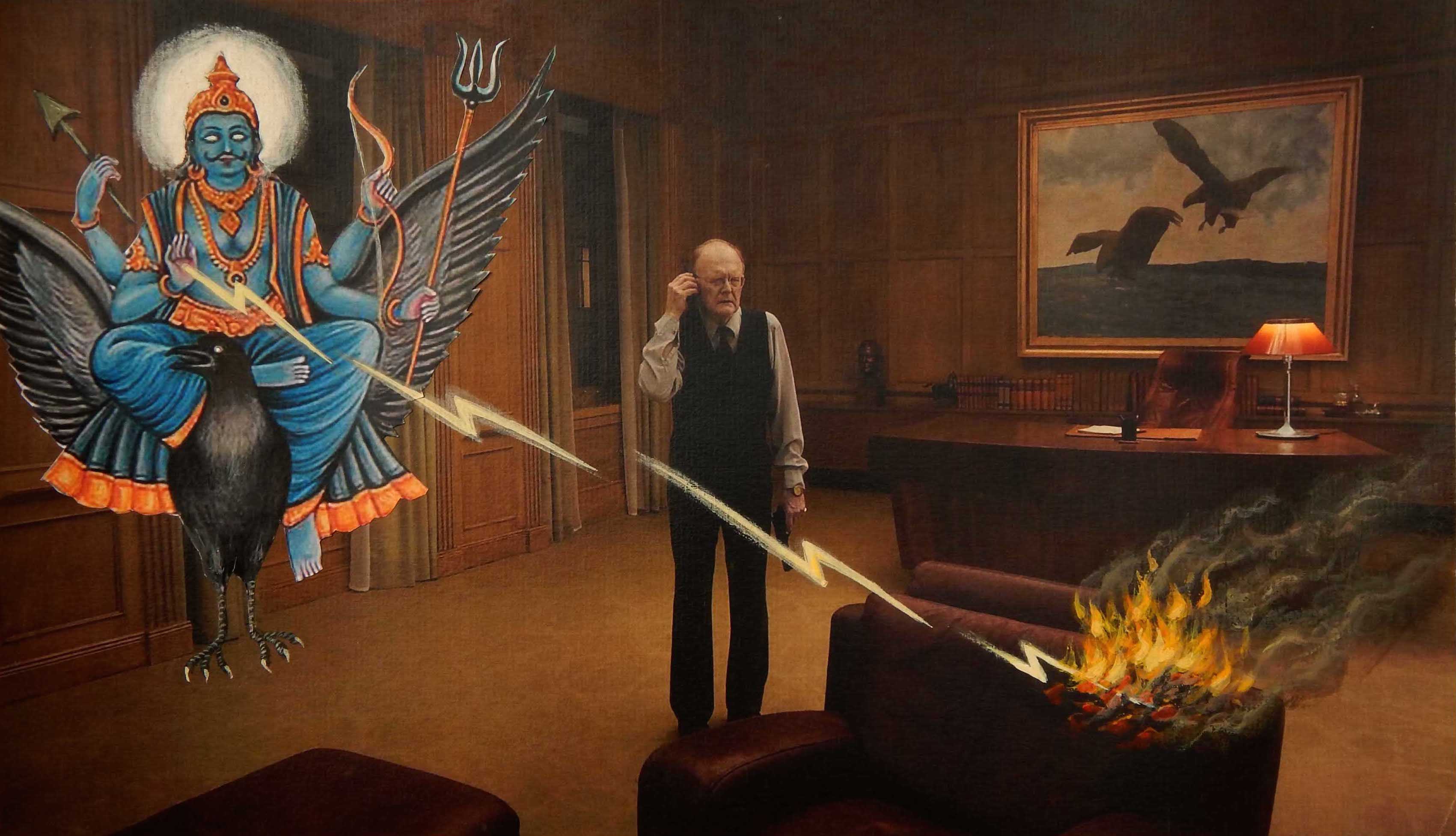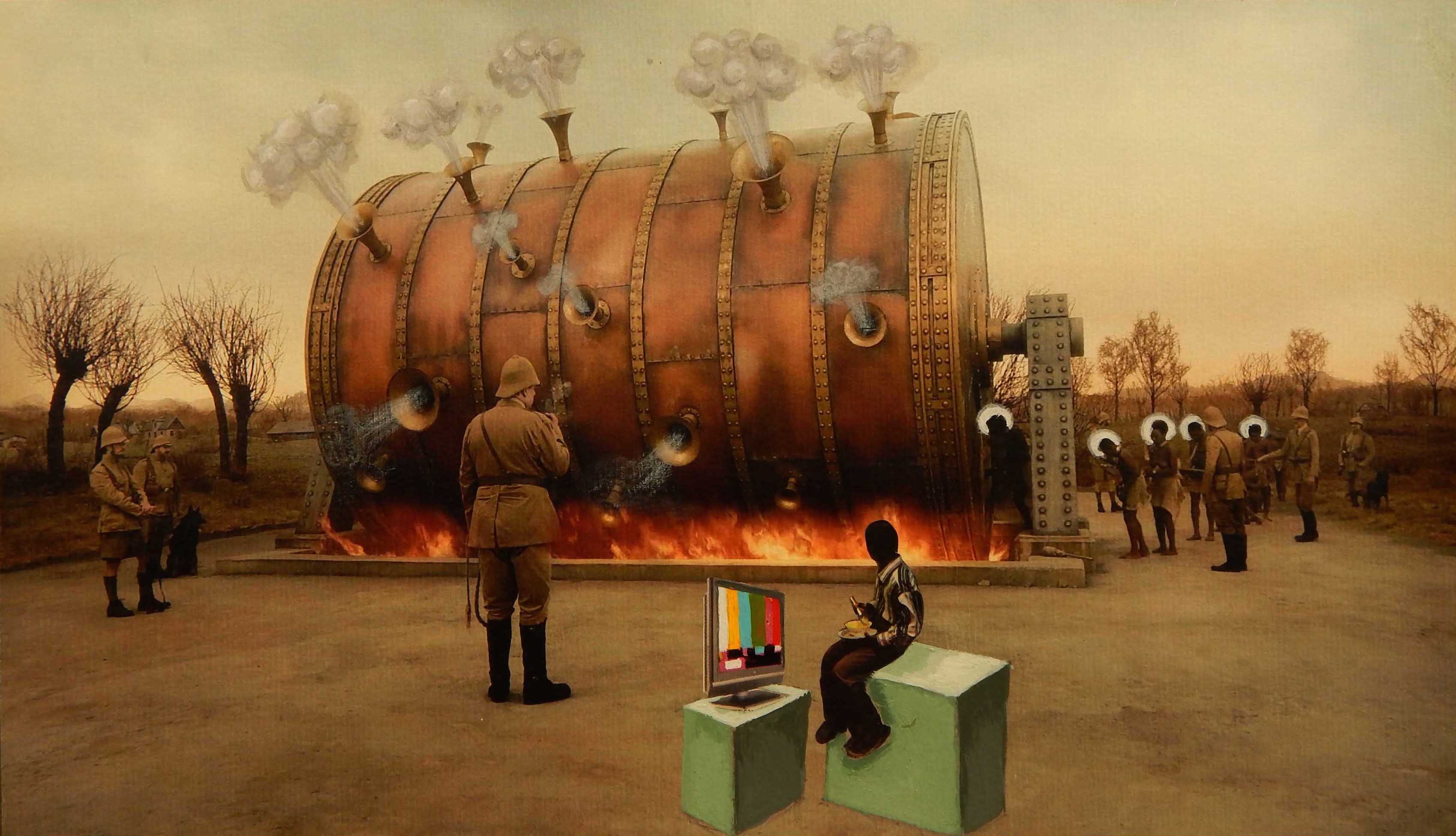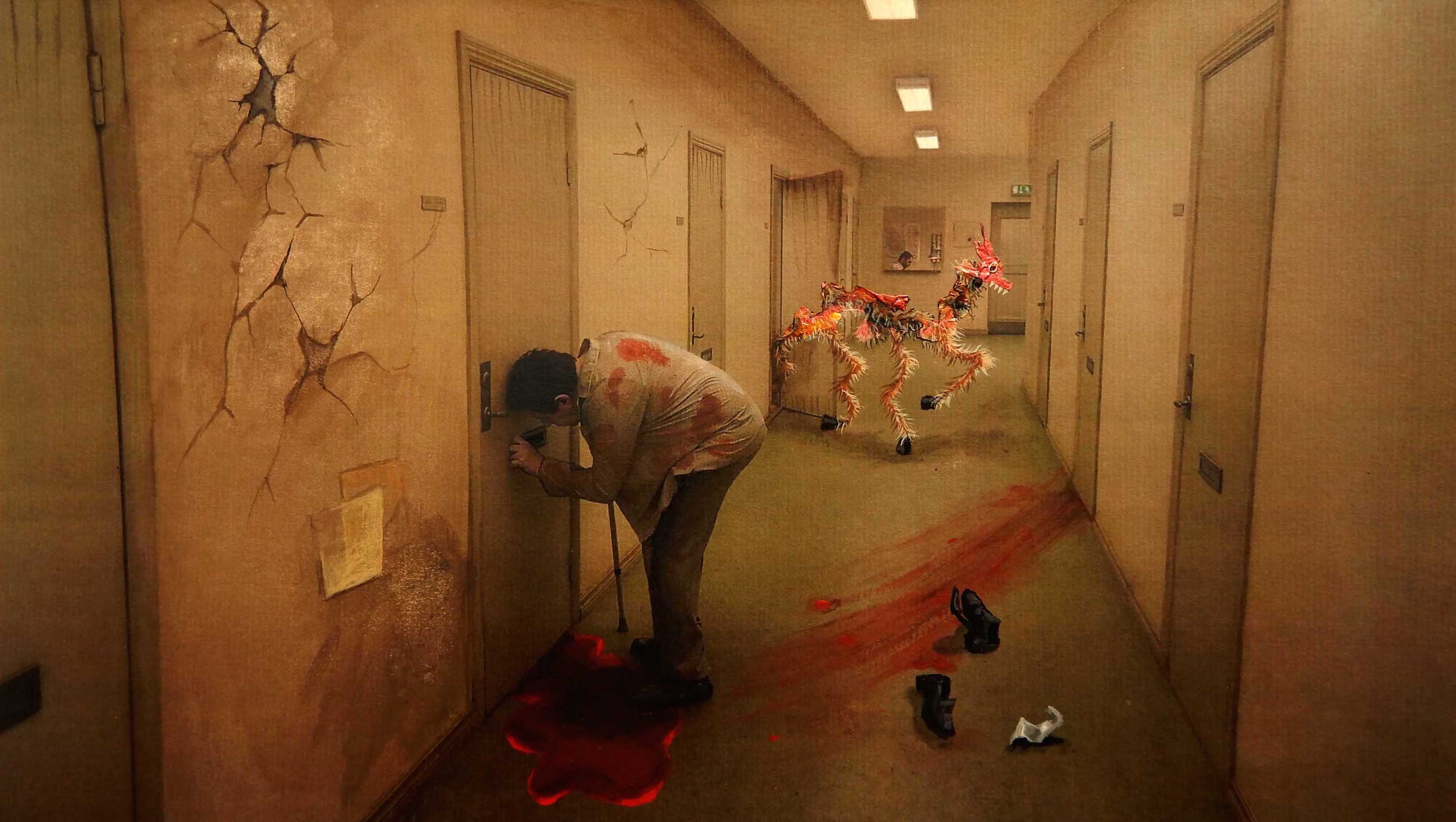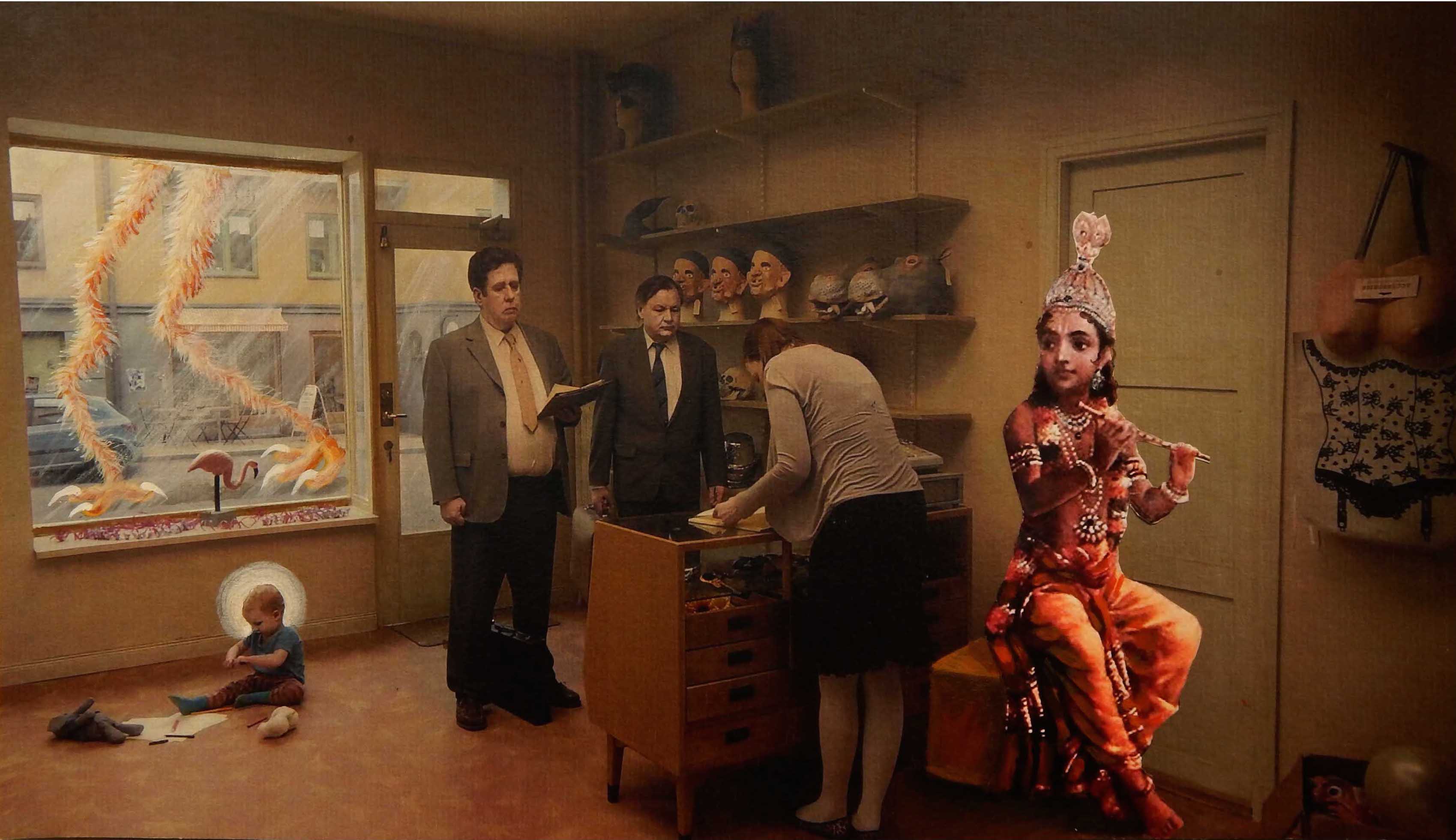‘Gods and Crime Scenes’ | Kolkata, India
Kolkata artist Arpan Ghosh has created a series of works inspired by the surreal world and social critique of Swedish film director Roy Anderson.
 ‘Gods and Crime Scenes’
‘Gods and Crime Scenes’
‘Gods and Crime Scenes’ is a series of paintings inspired by Roy Anderson’s movie ‘A Pigeon Sat on a Branch Reflecting on Existence’.
Roy Arne Lennart Anderson, a celebrated Swedish film director, is best known for ‘A Swedish Love Story’ (1970) and his ‘Living Trilogy’, which includes ‘Songs from the Second Floor’ (2000), ‘You, the Living’ (2007), and ‘A Pigeon Sat on a Branch Reflecting on Existence’ (2014). In his films, Roy plays with surreal visual situations. They are bleak social criticisms characterized by absurdist deadpan acting and surrealism.
 The movie ‘A Pigeon sat on a Branch Reflecting on Existence’ consists of a series of mostly self-contained tableaux, sometimes connected by recurring themes or characters. The story loosely follows two traveling salesmen, Jonathan and Sam. While living in a desolate flophouse, they move through numerous unsuccessful attempts to win customers for their joke articles. There is no main story-line in the traditional sense. All the scenes, however, are connected.
The movie ‘A Pigeon sat on a Branch Reflecting on Existence’ consists of a series of mostly self-contained tableaux, sometimes connected by recurring themes or characters. The story loosely follows two traveling salesmen, Jonathan and Sam. While living in a desolate flophouse, they move through numerous unsuccessful attempts to win customers for their joke articles. There is no main story-line in the traditional sense. All the scenes, however, are connected.
In the past few years, I have been working with absurdity and surrealism. They are somehow connected to the crisis of my journey. All of my works tend to be related to my personal life. Sometimes we do things or take risks without knowing the consequences, and we are completely unaware of what might be about to happen. While our actions seek consistency between our expectations and reality, our psyche moves beyond these realities, to an imaginary world where absurdities can exist, and impossible events can take place.
 For ‘Gods and Crime Scenes’ I took snapshots of several scenes in Roy’s film, made print-outs of the snapshots, then collaged and painted on them. Each of the uncanny scene represents an absurd and scary situation, of which the people involved are unaware. Yet sometimes we unconsciously cherish our fears. It is a mysterious trait of the human psyche. I try to create a contrast by simultaneously presenting two opposite types of objects or events, calling into question their actual existence. The long, deep cracks in the walls and floors, the strange, scary creatures and the blots of blood, they all create uncanny situations which are complex and psychologically intriguing.
For ‘Gods and Crime Scenes’ I took snapshots of several scenes in Roy’s film, made print-outs of the snapshots, then collaged and painted on them. Each of the uncanny scene represents an absurd and scary situation, of which the people involved are unaware. Yet sometimes we unconsciously cherish our fears. It is a mysterious trait of the human psyche. I try to create a contrast by simultaneously presenting two opposite types of objects or events, calling into question their actual existence. The long, deep cracks in the walls and floors, the strange, scary creatures and the blots of blood, they all create uncanny situations which are complex and psychologically intriguing.
I have added images of Indian Gods and Goddesses from the paintings of Raja Ravi Varma. Hindu mythology is full of stories of magical events, that depict the special powers of Gods and Goddesses. I have placed their images in my snapshots to create drama and to make the situation more surreal.
 In this image, for example, there is a baby sitting near a window; a giant monster is walking outside that window, but the other characters are completely unaware of its presence. I collaged in the work an image of the god Krishna. But god Krishna is not a savior here... he is just a silent observer, like a common person in that scenario. So I purposely created the visual contrasts to convey my thoughts.
In this image, for example, there is a baby sitting near a window; a giant monster is walking outside that window, but the other characters are completely unaware of its presence. I collaged in the work an image of the god Krishna. But god Krishna is not a savior here... he is just a silent observer, like a common person in that scenario. So I purposely created the visual contrasts to convey my thoughts.
In some of the works I adorn the Gods with a halo around their heads. Sometimes I do the same for human beings as well, to confuse their enigmatic presence. The characters in the paintings are not at all aware of themselves and their weirdness, nor of the absurdity of their surroundings. Rather, a significant ignorance is present regarding the danger of the situations. It is the ignorance that comes from the neglect or denial of any information that conflict with our existing beliefs or our usual comfort.